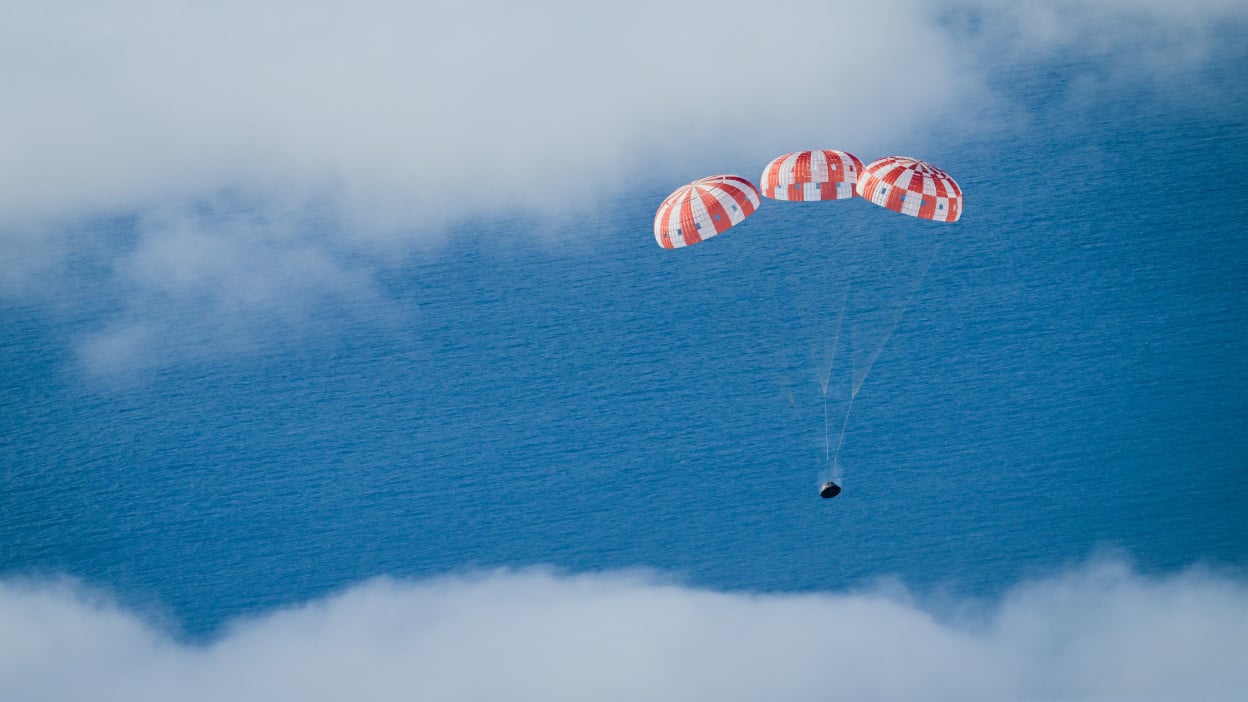NASA ended the year with the successful landing of the Orion spacecraft after a flyby of the Moon as part of the Artemis I mission. The new capsule was specially designed and built to return astronauts back from the surface of our space neighbor after the Apollo era.

After more than 25 days of deep space stress testing that clocked 2.2 million kilometers on Orion’s odometer, the Artemis I mission ended with a splashdown in the Pacific Ocean off Mexico’s Baja California Peninsula at 12:40 p.m. local time on December 11. A US space agency drone captured the historic feat in a five-minute video released this week. The video shows in detail how Orion emerges from the clouds after an unprecedented re-entry technique, the so-called “skip”.
Drone video shows Orion undergoing a crucial test of its new heat shield, enduring atmospheric re-entry and decelerating to 38km/h with its three parachute domes before plunging into the ocean. NASA moved the landing site to the south to avoid bad weather. The team initially planned to land off the coast of San Diego, California.
This mission marked the hottest and fastest spacecraft landing in history. Orion entered the atmosphere, moving at a speed of 40 thousand km/h, which is 32 times the speed of sound.
The advantage of this rapid entry, mission managers say, is that the intense overload — the feeling of heaviness pressing down on the body during extreme acceleration — is broken up into two smaller events. When people are subjected to a force that far exceeds normal gravity, their hearts experience tremendous pressure, causing dizziness and sometimes loss of consciousness, and in extreme cases, can even lead to death. Although there were no astronauts on board the capsule during the Artemis I mission, NASA believes that such a maneuver will protect the astronauts from excessive strain on future missions.
We previously reported how ESA released a recording of the most spectacular moments of the Artemis I mission.

